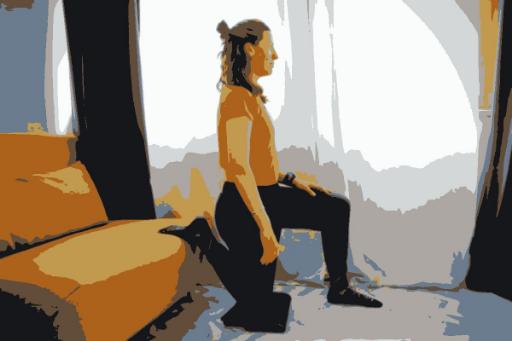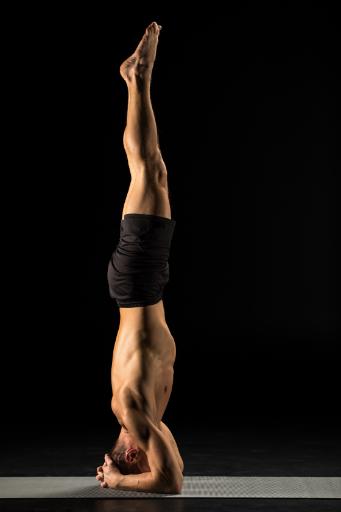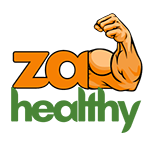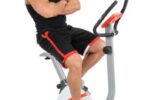Welcome back to the second part of our article on why you should stretch your body every day. In the first part, we explored some of the benefits of stretching, how to do it properly, and some of the best stretches for different parts of your body, such as the IT band, glute, SI joint, couch, and vertical stretches. If you missed the first part, you can read it here. In this part, we will talk more about hyperbolic stretching and how to do it safely and effectively. Hyperbolic stretching is a type of stretching that involves increasing the intensity and duration of your stretches to achieve extreme levels of flexibility and range of motion. It is based on the idea that you can overcome the natural reflex that limits your stretching ability by using specific techniques and exercises.
SI Joint Stretches

The SI joint, or sacroiliac joint, is the joint that connects your sacrum, or the base of your spine, to your ilium or the upper part of your pelvis. It helps transfer the weight and force between your upper and lower body and is involved in movements such as walking, running, and bending. The SI joint can become stiff, inflamed, or misaligned, causing pain and reduced mobility. Here are some stretches that can help you ease and prevent your SI joint pain:
- Knee to chest in SI joint stretches : Lie on your back with your legs extended and your arms by your sides. Bring your right knee toward your chest, holding it with both hands. Gently pull your right knee closer to your chest, keeping your left leg on the floor and your lower back flat. You should feel a stretch in your lower back and right hip. Hold for 15 to 30 seconds, then switch sides and repeat.
- Pelvic tilt stretch in SI joint stretches : Lie on your back with your knees bent and your feet flat on the floor. Place your hands on your hips and tilt your pelvis backward, flattening your lower back against the floor. Hold for 5 seconds, then tilt your pelvis forward, creating a small arch in your lower back. Hold for 5 seconds, then return to the neutral position. Repeat ten times.
- Piriformis SI joint stretches : Lie on your back with your knees bent and your feet flat on the floor. Cross your right ankle over your left knee, forming a figure-four shape. Lift your left foot off the floor and bring your left knee toward your chest. Interlace your fingers behind your left thigh and gently pull your left leg closer to your chest. You should feel a stretch in your right glute and hip. Hold for 15 to 30 seconds, then switch sides and repeat.
Couch Stretch

The couch stretch is a simple and effective stretch that targets your hip flexors, which are the muscles that connect your thigh to your pelvis and spine. They help you lift your legs, bend your hips, and stabilize your core. The hip flexors can become tight and shortened, especially if you sit for long periods, causing pain and reduced mobility. The couch stretch can help you lengthen and loosen your hip flexors, improving your posture and performance. Here is how to do the couch stretch :
- Couch stretch : Find a couch, a chair, a wall, or any other stable surface about knee height. Place your right knee on the floor, as close as possible to the surface, and your left foot on the floor, with your left knee bent at a 90-degree angle. Place your hands on your left thigh and gently push your hips forward, keeping your back straight and your chest up. You should feel a stretch in the front of your right hip and thigh. Hold for 15 to 30 seconds, then switch sides and repeat.
Ballistic Stretching

Ballistic stretching is a type of stretching that involves using momentum and bouncing movements to stretch your muscles and joints beyond their normal range of motion. It is often used by athletes and dancers to prepare for explosive and dynamic activities, such as sprinting, jumping, and kicking. Ballistic stretching can increase your power, speed, and flexibility, but it also carries a high risk of injury and muscle damage. Therefore, ballistic stretching is not recommended for most people, and it should only be done by experienced and well-conditioned individuals under the supervision of a professional. Here are some examples of ballistic stretching :
- Leg swings: Stand with your feet shoulder-width apart and your hands on your hips. Swing your right leg forward and backward, as high and as fast as you can, without bending your knee. Do this for 10 to 15 swings, then switch sides and repeat.
- Arm circles: Stand with your feet shoulder-width apart and your arms extended to your sides, parallel to the floor. Rotate your arms in small circles, gradually increasing the size and speed of the circles. Do this for 10 to 15 circles in each direction, then switch directions and repeat.
- Neck rolls: Stand with your feet shoulder-width apart and your shoulders relaxed. Drop your chin to your chest and slowly roll your head to the right, then to the back, then to the left, then to the front, making a full circle. Do this for 10 to 15 circles in one direction, then switch directions and repeat.
Vertical Stretch

The vertical stretch is a type of stretching that involves reaching your arms overhead and elongating your spine and torso. It is a simple and effective way to stretch your upper body, especially your shoulders, chest, back, and abdominals. It can also help you improve your posture, breathing, and alignment. Here are some ways to do the vertical stretch :
- Standing vertical stretch : Stand with your feet shoulder-width apart and your arms by your sides. Reach your arms overhead, interlacing your fingers and turning your palms up. Lift your chest and ribs, and lengthen your spine. Gently lean to the right, then to the left, then to the front, then to the back, making a small arc with your upper body. Return to the center and repeat ten times.
- Sitting vertical stretch : Sit on the floor with your legs crossed and your back straight. Reach your arms overhead, interlacing your fingers and turning your palms up. Lift your chest and ribs, and lengthen your spine. Gently lean to the right, then to the left, then to the front, then to the back, making a small arc with your upper body. Return to the center and repeat ten times.
- Lying vertical stretch : Lie on your back with your legs extended and your arms by your sides. Reach your arms overhead, interlacing your fingers and turning your palms up. Lift your chest and ribs, and lengthen your spine. Gently lift your hips off the floor, then lower them back down, making a small bridge with your body. Return to the starting position and repeat ten times.
Hyperbolic Stretching

Hyperbolic stretching is a type of stretching that involves increasing the intensity and duration of your stretches to achieve extreme levels of flexibility and range of motion. Hyperbolic stretching is based on the idea that using specific techniques and exercises can overcome the natural reflex that limits your stretching ability. Hyperbolic stretching is not for everyone, and hyperbolic stretching requires caution and supervision.
Conclusion
Stretching your body daily can bring you many benefits, such as improving your flexibility, range of motion, posture, blood circulation, mood, and performance. It can also help you prevent and relieve pain, stiffness, and injuries. To stretch properly, you should warm up, choose the right type of stretching, focus on major muscle groups, be gentle and gradual, and be consistent and patient. You can also try some of the best stretches for different parts of your body, such as the IT band, glute, SI joint, couch, ballistic, and vertical stretch . Remember to listen to your body, breathe normally, and enjoy the process and the benefits of stretching.







